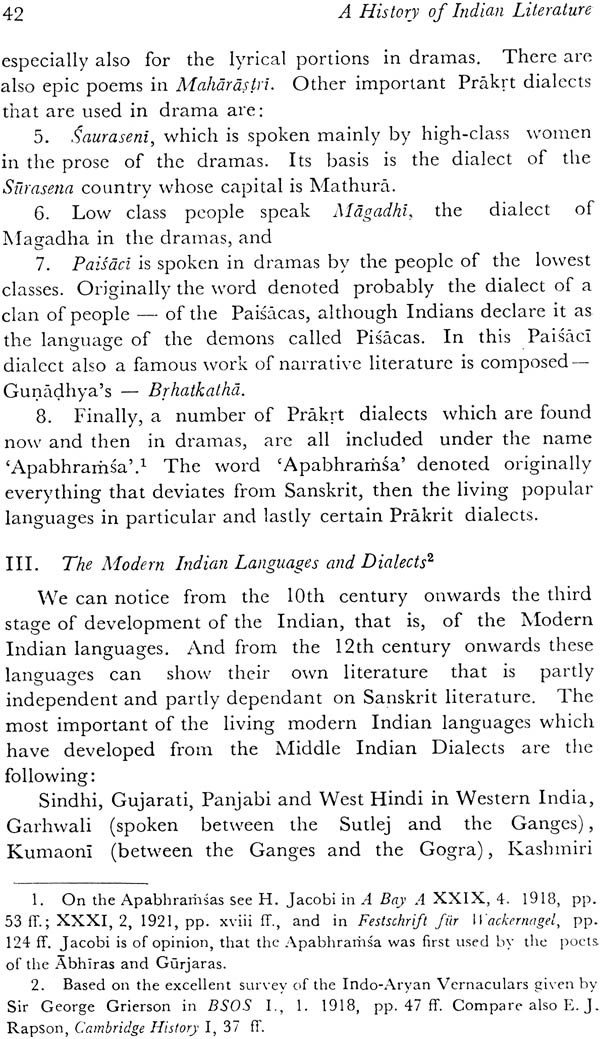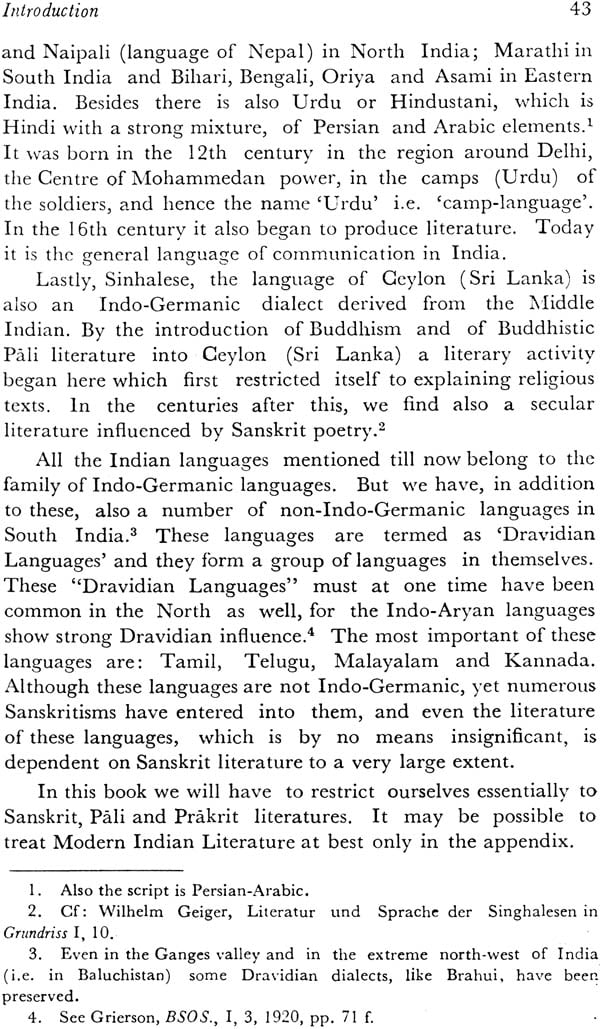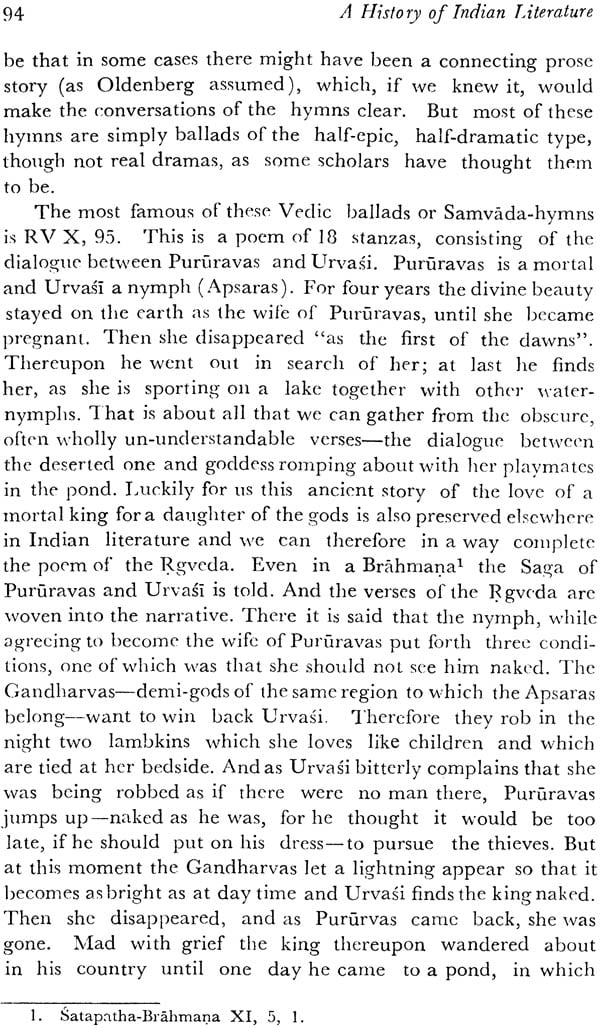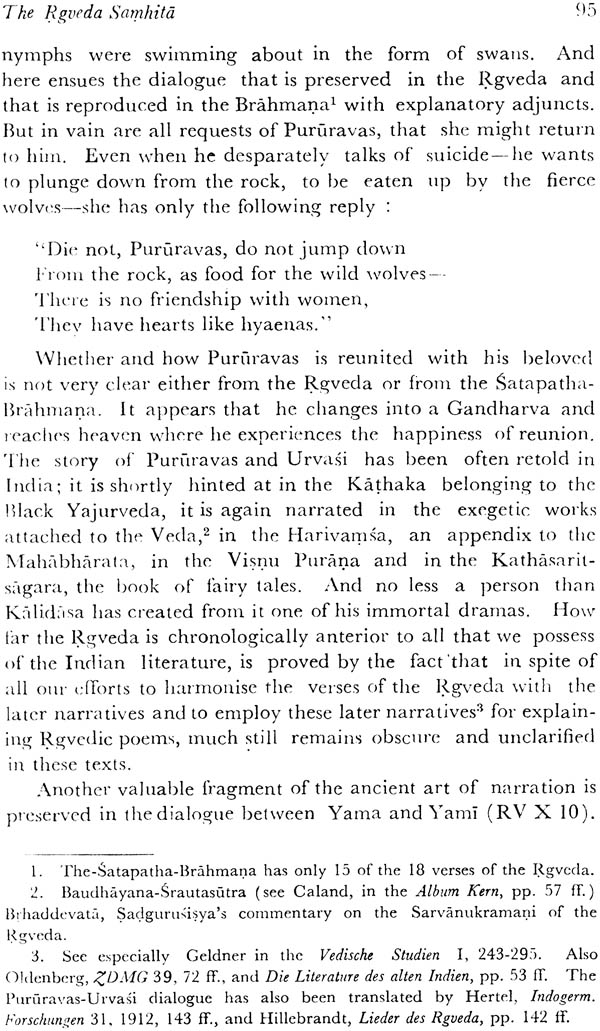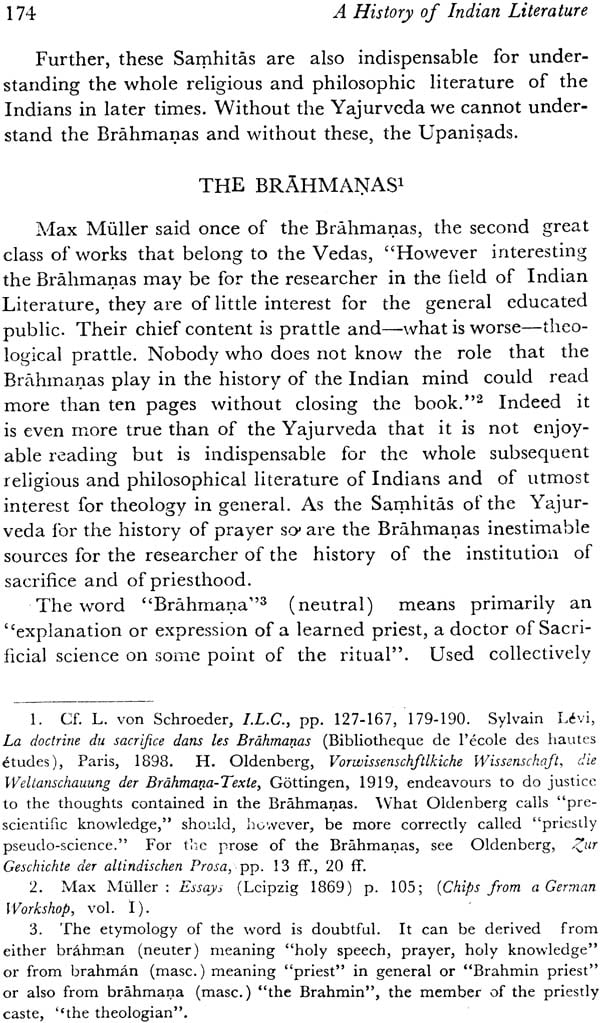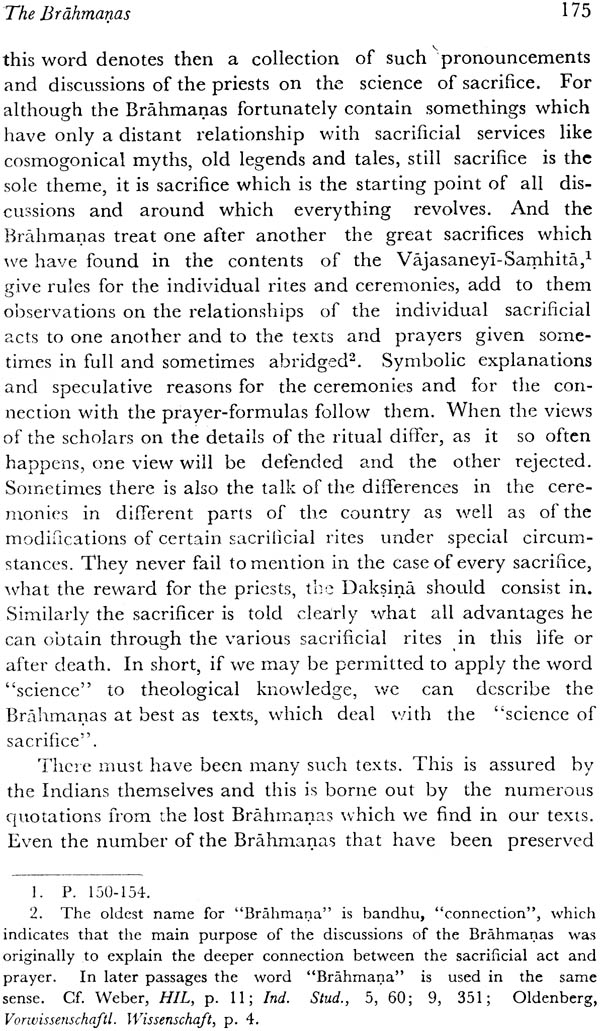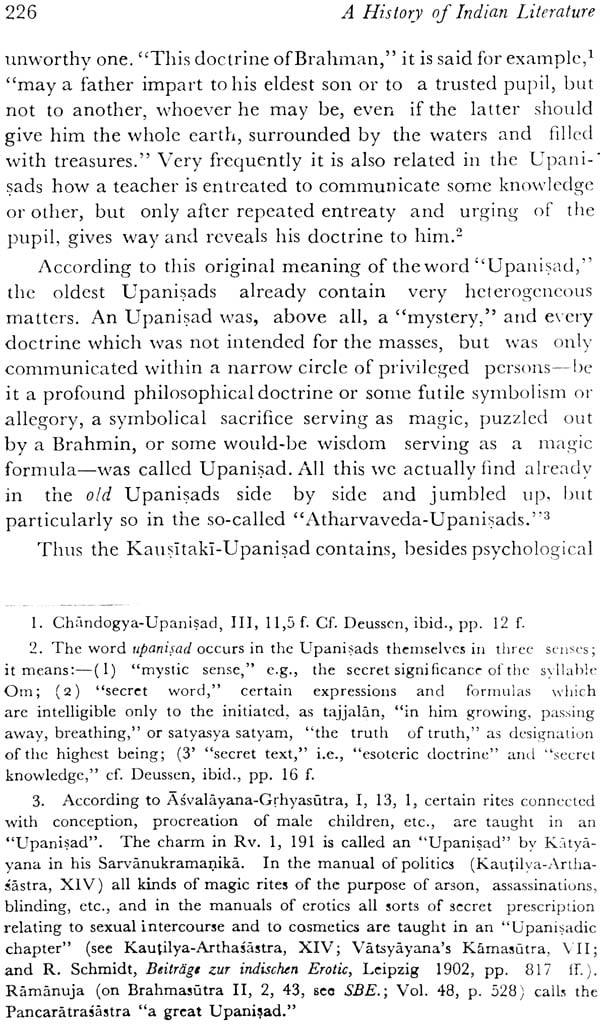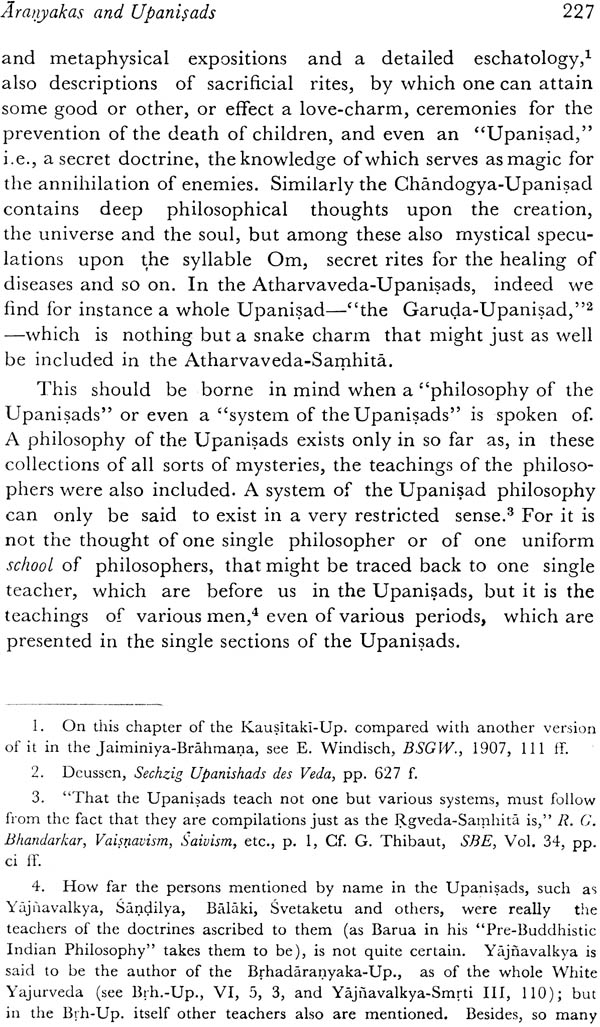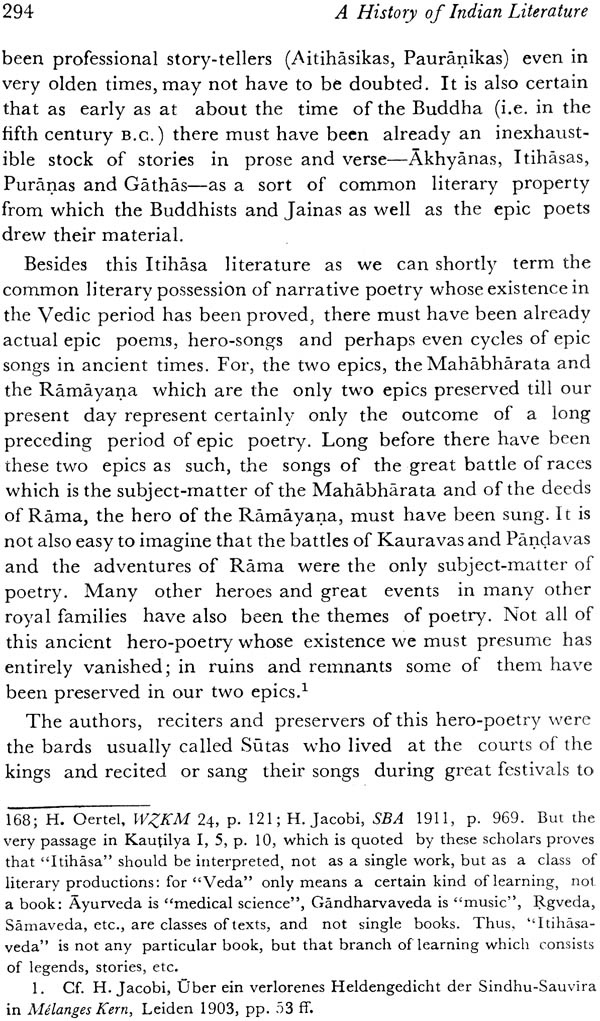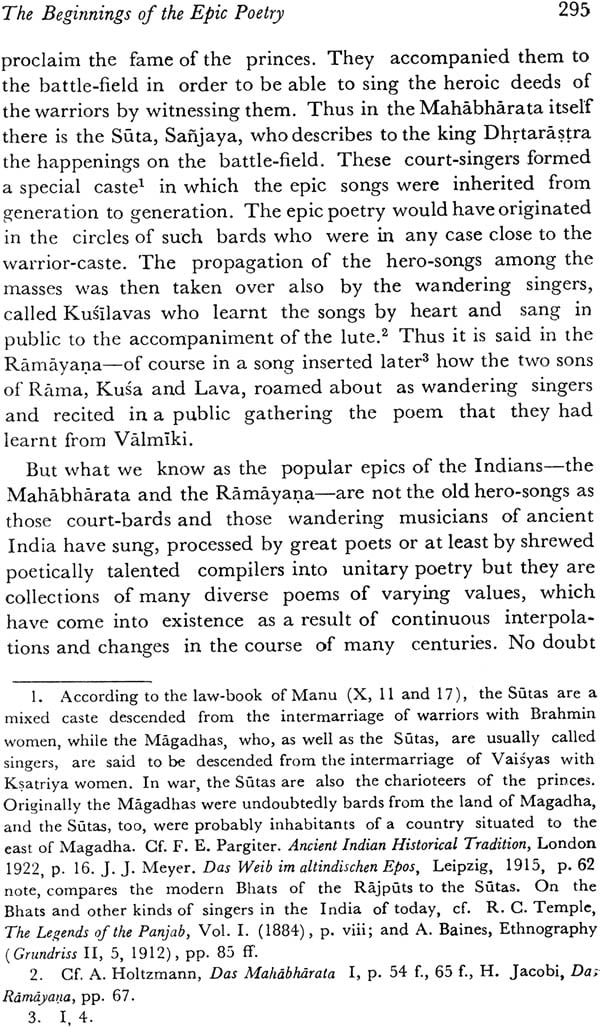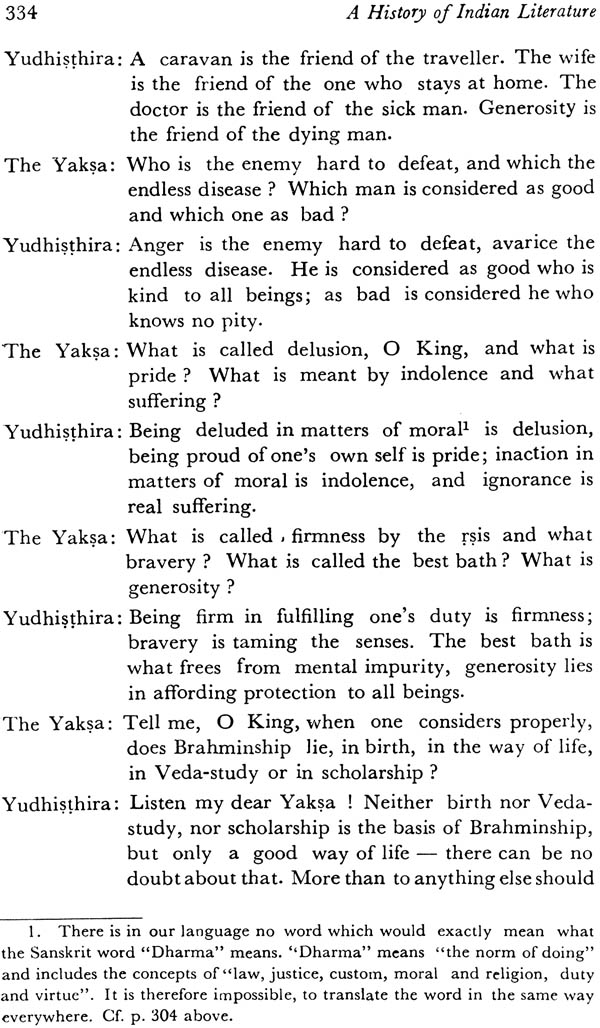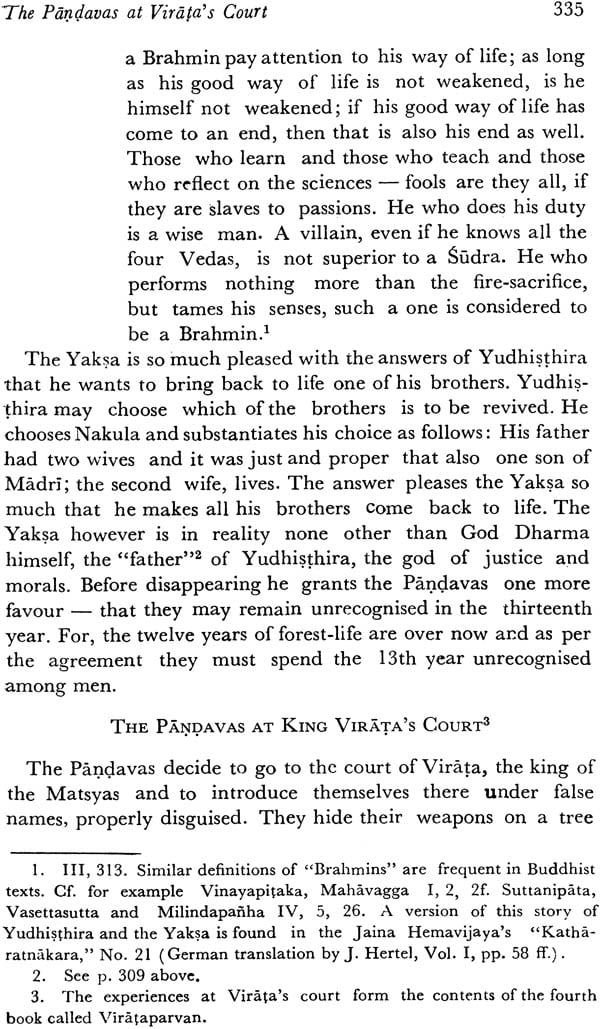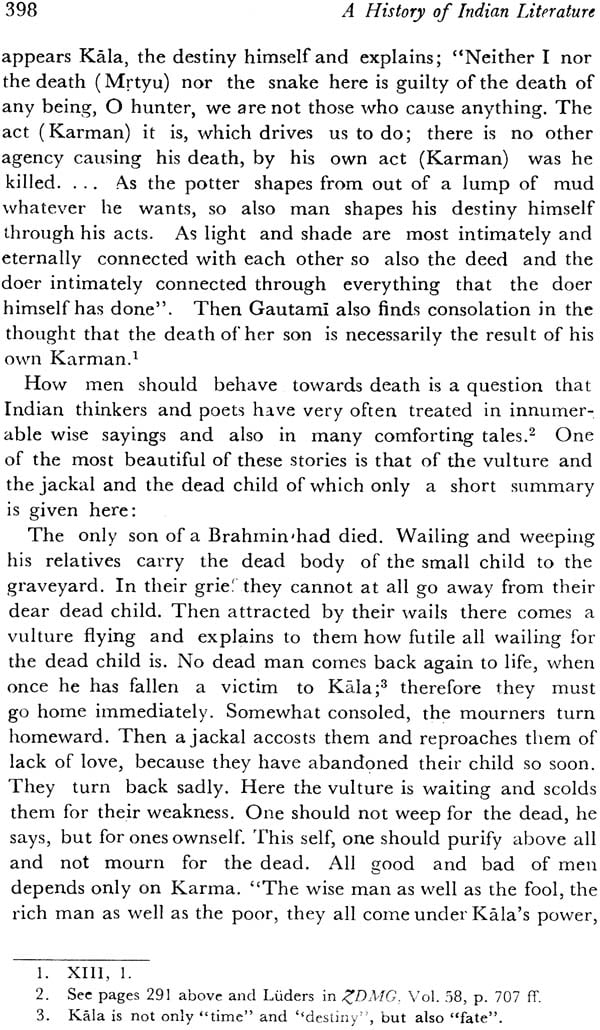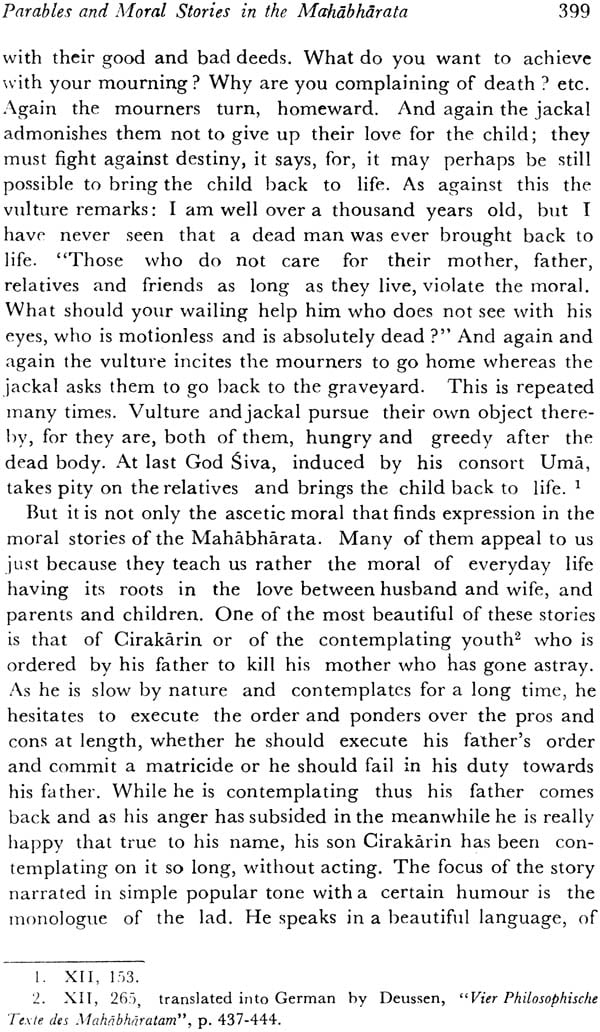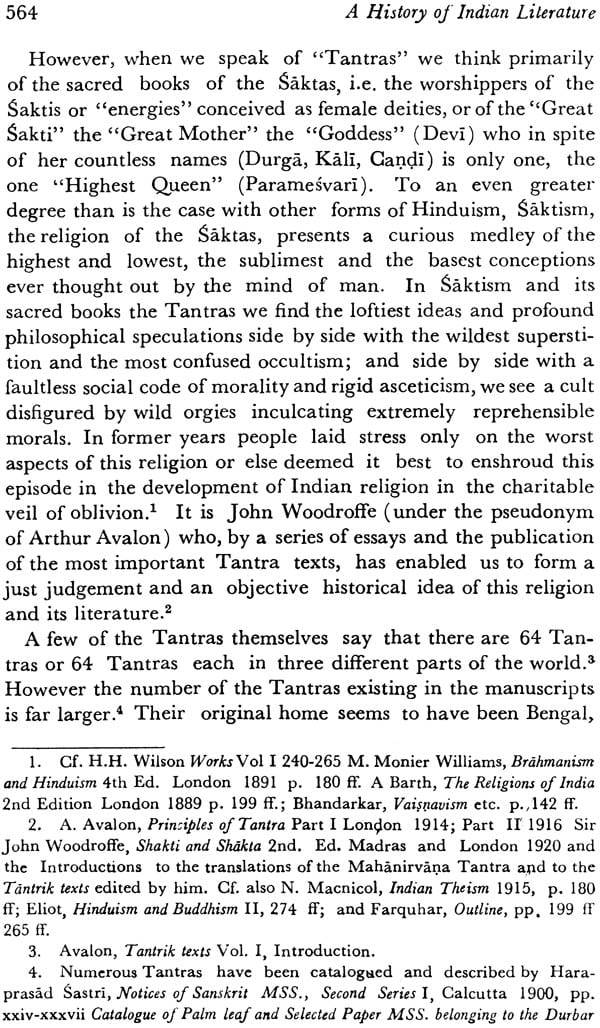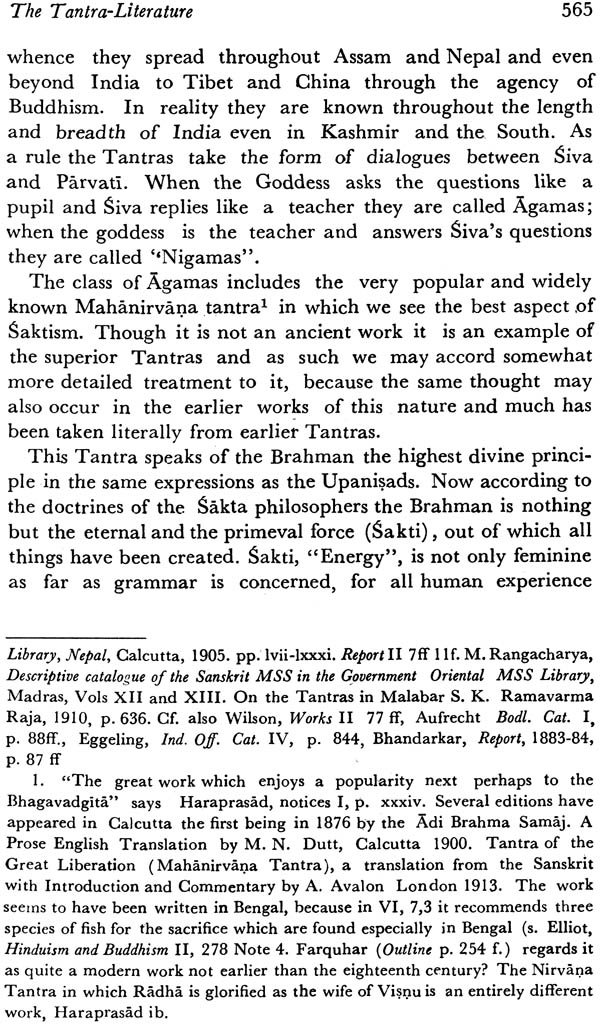
A History of Indian Literature – Introduction, Veda, Epics, Puranas and Tantras (Volume I)
Book Specification
| Item Code: | NAC704 |
| Author: | Maurice Winternitz |
| Publisher: | Motilal Banarsidass Publishers Pvt. Ltd. |
| Edition: | 2018 |
| ISBN: | 9788120802643 |
| Pages: | 616 |
| Cover: | Hardcover |
| Other Details | 9.0 Inch X 5.7 Inch |
| Weight | 900 gm |
Book Description
Winternitz’s major work was Geschichte der Indzschen Literature (History of Indian Literature). The first volume was published in two parts in 1905 and 1908. It dealt with Vedic literature, the epics and Puranas. The second volume on Buddhist and Jam literature appeared in two parts, in 1913 and 1920. In the last volume, Kavya literature and scientific literature found a representation. A bird’s eye view of the vernacular literature of modern India completed that volume published in 1922. The value of the work was enhanced by copious notes. The English translation was revised by Winternitz himself. The first volume was published in Calcutta in 1927, the second in 1933. The treatment of Buddhist Sanskrit literature in the English translation represented a new edition. Winternitz died before the third volume could be revised. A reprint appeared in Delhi 1983, 1985 and 1987.
The present English Translation is based on the original German work and has been revised in the light of further researches on the subject by different scholars in India and elsewhere.
Volume I is divided into two sections. Section I relates to Veda (the Four Samhitas), Brahmanas, Aranyakas, Upanisads, Vedangas and the literature of the Ritual. Section Ii relates to the study of two great Epics of India—the Ramayana and the Mahabharata. It carries out a general survey of the Puranic literature, and provides ample information about the Trantras too.
Volume II contains two sections viz. Section III and Section IV relating to Buddhism and Jainism literature respectively. Volume III covers the history of Classical Sanskrit literature and the scientific literature with its characteristics, grammar, lexicography, philosophy, dharmasastra, architecture, sangitasastra, kamasastra, ayurveda, astronomy, astrology and mathematics and also has an appendix.
Nearly seventy-five years ago Maurice Winternitz, the famous Austrian scholar and wrote the first volume of his A History of Indian Literature in German. This was followed by the second and third volumes after a few years. This English translation is based on the original German work and has been revised in the light of further researches on the subject by different scholars in India and elsewhere.
The volume is divided into two sections. Section 1 relates to Veda (the four Samhitas), Brahamanas, Aranyakas, Upan4cadi. Vedangas and the literature of the Ritual. It discusses some of the most complicated problems such as the Age of the Veda, etc. oil which Vedic scholars have differed widely.
Section 11 relates to the study of two great Epics of India: The Ramayana and the Mahabharata. It carries out a general survey of the Puranic literature, and provides ample information about the Tantras too. The book presents a history of ancient culture of the Veda, the philosophical thought of Upanisads, the ethos of the epics and Puranas, the spiritual and material contents of the Tantra literature.
MAURICE WINTERNIT/, (1863-1937) was Professor of Indology and Ethnology at the German University of Prague (Czechoslovakia).
Two years after obtaining a Ph.D. degree (1886), Winternitz went to Oxford. In 1899, he went to Prague and was appointed Professor of Indo Aryan philology and ethnology. In 1921 on the invitation of Rabindranath Tagore, he spent a year at the Vishvabharati University, Shantiniketan. he lectured and travelled extensively in India.
While assisting Max Mueller in the second edition of the Rigveda, Winternitz added references to texts, arid prepared the general index to the 49 volumes of “Sacred Books of the East”. In 1897, he published Notes on the Mahabharata in ‘journal of the Royal Asiatic Society.” He contributed an anthology of Buddhism to Bertholet’s Religionsgeschichlliches Lssebuch, in 1908.
A bibliography of Wintenitz’s works was compiled by O. Stein and W. Gampert. It was published in 1934 in “Acta Orientalia”, Prague. It lists 452 titles and shows the wide range of Winternitz’s scholarship.
As the publishers have announced in their notice, the collection of works in which the present volume devoted to the oldest period of Indian Literature appears is meant not for scholarly circles but for all educated people of the nation. Accordingly, always in the course of my work I was having in mind such readers as know nothing of Indian literature and do not have any special knowledge of the subject of Indology; I however did not think of those people who would also like to know something about Indian literature in the course of one short hour; but I had in view those people who would like to get such a thorough acquaintance with it as is possible without a knowledge of Indian languages. But a history of Indian literature cannot be, like a history of German, English or French literature, a simple presentation of the development process of already known literary works, but it must also give as much information as possible about the contents of literary phenomena through extracts and synopsis in all cases where there are no German translations, and this is so in a majority of cases. In other words—the History of Literature must be at the same time also the description of Literature. Especially in the case of the popular epics and pur4as, with which the second half of the present volume deals, very few have appeared till now in German translations. Comprehensive synopsis and extracts have therefore had to be provided, if the reader should get even a faint idea of the works dealt with.
Consequently the volume grew to a larger extent than was originally planned. One more factor contributed to this. In particular the oldest Indian literature treated in this volume it in a way hanging in the air. Not even one of the many and extensive works which form part of the Veda, of the epics or of the puranas, can be attributed with any degree of certainty to one century or the other. It is however simply impossible to give information about the age of the Veda, the Mahabharata, the Ramayana and even the Puranas. Even the layman will not be satisfied if we say that we do not know anything definite about the time of these works. It is necessary to draw clearly the boundaries within which our ignorance ranges and to state the reasons supporting an approximate fixation of time although this was attained only through presumptions. So it was necessary to devote more extensive chapters to the questions of the age of the Veda, the epics and the Puranas. I emphasise particularly that these chapters too are written not for the specialist alone but mainly for the layman above described, whom I had in view as my reader. If in spite of this they contain something which is new even for the specialist—perhaps something which could even provoke contradiction—then the reason is that they deal with questions which have been in recent years objects of new investigations, new discoveries and several controversies.
The bibliography furnished in the notes is meant for the specialist whom it shall convince of the correctness of the author’s stand on the most important issues under dispute. Of course a book written for the ‘Educated people of the Nation’ should stand the test of the specialist and should be subjected to it thoroughly. On the other hand, in my notes for the layman 1 thought it important to draw his attention to all the accessible German translations and where these are not available, to the English and French translations. I have made use of these translations only in a few cases, where they appeared to me to produce the original in an excellent manner. Where no other translator’s name is mentioned, the translations are by me.
After these explanations it is not surprising that the original frame of work conceived for one volume was found to be inadequate for this History of Indian Literature. And I am indeed grateful to the publisher that he was convinced of the reasons adduced for enlarging the framework originally planned and gave his approval to a second volume. This enlargement entirely corresponds with the extent and significance of the Indian Literature—for which I may draw my readers’ attention to the Introduction (p. 1 if). While the present volume treats in a certain way the ‘Prehistoric’ time of the Indian Literature,—at least the beginnings of the Veda as well as the popular epics reach back to a hoary past shrouded in obscurity incapable of being reduced to definite dates—the second volume shall begin with the Buddhistic literature and introduce the reader to the literature of the actual historical time of India.
Information about the works which served as sources to me and to which I am indebted, is found in the Notes to the individual chapters. It was not possible for me to record in every individual case, what I owe to the basic Academic lectures on the History of Indian Literature by Albrecht Weber (2nd edition, Berlin 1876) and to the inspiring and valuable lectures on Indian Literature and Culture in Historical Development by Leopold Schroeder (Leipzig 1881). I am also indebted to the valuable “Bulletins des Religions de l’Inde” by A. Barth (in the Revue del’ Histoire des Religions I, III, V, XI, XIV, XXVIII f, XLI f and XLV, 1880-1902) although I have not made special mention of it each time. The scholarly essays of H. Oldenberg Die Literature des alten Indien (The Literature of Ancient India) (Stuttgart and Berlin 1903) are rather an aesthetic observation and assessment of the Indian literature, which was far from my intention. The works of A. Baumgartner (History of World- Literature II, The literatures of India and East Asia, 3rd and 4th edition, Freiburg i. B. 1902), A. A. Macdonell (A History of Sanskrit Literature, London 1900) and V. Henry (Les Literatures de l’Inde, Paris 1904) offered rue scarcely anything new. Richard Pischel’s short but excellent survey of Indian Literature in Part I, section VII (‘Oriental literatures’) of the collected works Die Kultur der Gegenwart (Berlin and Leipzig 1906) appeared only when my manuscript was already completed and was also partly printed. I should also mention the services rendered to me by the Orientalische Bibliographie of Lucian Scherman which is so indispensable to every orientalist. In conclusion I would like to thank sincerely all those who have reviewed favourably or criticised objectively the first half-volume which appeared two years ago.
The history of Indian literature is the history of the mental activity of at least three millennia expressed in speech and writing. And the place of this mental activity continued uninterrupted through the millennia in a country which extends from the Hindukush to the Cape Comorin and covers an area of one and a half million square miles, equal in extent to the whole of Europe excluding Russia—a country extending from 8°N to 35°N, thus stretching from the hottest equatorial regions right into the temperate zone. The influence that this literature exercised over the intellectual life of other folks even in olden days however is felt far beyond the frontiers of India and (Further India), in Tibet as well as China, Japan and Korea and in the South in Ceylon and the Malayan Peninsula and further beyond in the island groups of the Indian and the Pacific oceans, while in the West we find traces of Indian intellectual life in places reaching deep into Central Asia and East Turkistan, where Indian manuscripts were found buried in the sands of the desert.
In content Indian literature comprises everything which is included in the word ‘literature’ in the broadest sense of the term religious and mundane, epic and lyric, dramatic and didactic poetry as well as narrative and scientific prose. In the forefront we find religious literature. Not only the Brahmins in their Veda and the Buddhists in their Tipitaka but also many other numerous religious sects that have appeared in India have on record plenty of literary works—hymns, sacrificial songs, magic songs, myths and legends, sermons, theological treatises and polemic writings, text books of rituals and of religious order. In this literature is found heaped up material of inestimable value which cannot be ignored by any scholar of religion. In addition to this activity in the field of religious literature begun thousands of years ago and being continued even till the present day there have been in India even in ancient times songs of heroes which in the course of centuries got condensed into two great popular epics— the Mahabharata and the Ramayana. These sagas were the sources which supplied material for centuries to the poets of India in the Middle Ages and works of epic poetry were thus born winch are termed artistic epics in contrast to those popular epics.
Although these works of epic poetry with their excessively exaggerated artistry are often not to our taste, still their authors have left us works of lyric and drama which can be compared with the most beautiful creations of modern European literature by virtue of their delicacy and fervour and also of the power of dramatic formation. And in one field Belles Letters, in the field of aphorisms (epigrammatic poetry) Indians have achieved a mastery which has never been achieved by any other folk. India is also the land of fairy tales and fables. Indian collections of fairy tales, fables and tales in prose have played no small role in the history of world literature. Indeed the research into fairy tales — such an attractive study of fairy tales and of the pursuit of the motifs of fairy tales in their wanderings from folk to folk — has developed into an independent branch of knowledge only after Benfey’s fundamental work on Pancatantra, the collection of Indian fairy tales.
It is one of the peculiar features of the Indian mind, that it has never drawn a clear line of demarcation between purely artistic creation and scientific activity, so that a distinction between ‘Belles Letters’ and ‘Scientific Literature’ is indeed impossible in India. What appears to us as a collection of fairy tales and fables, is considered by Indians as a text book of politics and moral. On the other hand history and biography have never been treated in India except by poets and as degenerate epic poetry. Differentiation between the forms of poetry and prose is also not known in India. Every object can be treated equally well in verses as well as in prose form. We find novels which are different from the artistic epics only in this that they do not have a metrical form. There is a special preference for mixing prose and verse from ancient times. And for what we call scientific literature, the prose form was used in India only to a small measure and to a very large extent only the verse form has been used.
This is true of the works of philosophy and law as well as those of medicine, astronomy, architecture etc. Indeed even grammars and dictionaries have been written by Indians in metric forms. Perhaps nothing can be more characteristic than the fact that there is a big artistic epic in 22 chapters which serves the express purpose of illustrating and stressing the rules of grammar. Philosophy has been in India even from early times, object of literary work of course at first as a continuation of religious literature, but later even independent of it. Similarly even in very olden days law and moral — of course as above at first in connection with religion — was made the object of an independent literature of law, composed partly in verse and partly in prose. Even today distinguished jurists and sociologists esteem the significance of this literature of law for research of comparative law and for sociology. Even centuries before Christ’s birth grammar was studied as a science in which Indians by far surpassed all other folks of antiquity. Lexicography also attains a ripe old age. Indian poets of artistic poetry of later times have not sung what God gave them, but they studied the rules of grammar and looked up in dictionaries for rare and poetic expressions; they composed according to the teachings and rules that were laid down in scientific works of metre and prosody. The Indian mind had always a special preference for classifying and treating all objects in a pedantic scientific way. Hence we find in India not only a rich and partly ancient literature on medicine, astrology and astronomy, arithmetic and geometry, but also on music, singing, dancing and the art of acting, magic and mantik, indeed even erotics have been reduced to scientific systems and have been treated in separate text books.
In each one of the branches of literature mentioned here a simply unmanageable quantity of literary products got accumulated in the course of the centuries not in the least also due to the fact that in almost all fields of religious literature, that of poetry as well as of science, the Commentators developed a very keen activity. Some of the most significant and extensive works on grammar, philosophy and law are only commentaries to old works. And to these commentaries very often again further commentaries were written. In India it is not seldom that an author has written a commentary to his own work. Thus it is no wonder that the whole mass of Indian literature is almost unmanageable. And although the lists of Indian manuscripts which are available in Indian and European libraries contain many thousands of book titles and authors’ names, yet numerous works of Indian literature have been lost and many names of ancient authors are known Only through quotations by later authors or have fully disappeared.
All these facts — the age, the large geographical area of usage, the quantity and richness, the aesthetic and cultural historical value of Indian literature — would completely suffice to make our interest for this great, peculiar and ancient literature appear justified. There is however something more that makes Indian literature interesting to us. The Indo-Aryan languages together with the Iranian languages constitute the eastern branch of that great linguistic family to which also German and also most languages of Europe belong and which are called Indo-Germanic. It was precisely Indian literature whose research has led to the discovery of this linguistic relationship — a discovery which was so truly epoch-making, because it threw such a surprisingly new light on the relations of nations to one another in prehistoric times. For, the kinship of languages led necessarily to the conclusion that in earlier times there was unity of languages and this in its turn led to the conclusion that the peoples speaking these Indo-Germanic languages were closely knit together. Even today serious errors are prevalent in the matter of the relationship of the Indo Germanic peoples. One speaks of an Indo-Germanic ‘race’ which does not at all exist and has never existed. We still hear that Indians, Persians, Greeks, Romans, Germans and Slays are of one and the same blood, descendants of one and the same ancient Indo-Germanic Folk, These were however too hasty conclusions. Although it is more than doubtful that the peoples who speak indo-Germanic languages have all descended from the same forefathers, yet there may not be any doubt that the commonness of the language, of this most important tool of all mental activity, presupposes a mental relationship and a common culture.
Although Indians are not flesh of our flesh and blood of our blood, still we can discover in the Indian mental-world mind of our mind. In order to have a knowledge of the ‘Indo-Germanic mind’ that is of the peculiarity in thinking, viewing and writing which is common to all these folks, it is absolutely necessary that our one sided knowledge of Indo Germanic character which we have acquired through the study of European literatures should be supplemented by an acquaintance with the Indo-Germanic mind as it has been active in the far-East. Therefore Indian literature constitutes precisely an essential supplement to the classical literature 0f ancient Greece and Rome for everyone who would like to view Indo-Germanic character in its proper perspective. In the matter of artistic value Indian literature may not stand comparison with Greek literature; it is true that Indian mental world has not exercised, even in the remotest sense of the term such an influence on modern European mental life as Greek and Roman cultures. But if we want to learn to understand the beginnings of our own culture, of the oldest Indo-Germanic culture, then we must go to India, where the oldest literature of an Indo Germanic folk is preserved. For, in whatever manner the question of the age of Indian literature may be decided, this much might be certain, that the oldest literary monument of Indians is at the same time also the oldest monument of Indo-German literature that we have.
Moreover the direct influence of Indian literature on our own literature is also considerably high. We shall see that the narrative literature of Europe is dependent in no small measure on the fairy tale literature of India. And German literature and German philosophy have been specially influenced manifold by Indian thinking since the beginning of the 19th century; and this influence is no doubt still on the increase and will grow still further in the course of our century.
For, the affinity of mind which is revealed by the Indo Germanic linguistic unity is clearly recognisable even today and this nowhere so much as between Indians and Germans. The conspicuous concurrences of German and Indian minds have been pointed out qui often.’ ‘Indians’, says Leopold v, Schroeder, ‘are the folk of romanticism in ancient times; Germans are so in modern times’.
The inclination to perspective observation and to abstract speculation as well as the leanings to pantheism which are common to Germans and Indians have already been pointed out by G. Brandes. In many other respects also German and Indian characters concur conspicuously. Not only German poets have sung about ‘World-suffering’. ‘World-suffering’ is also the basic thought on which Buddha’s teachings are built- up; and many Indian poets have lamented the pain and suffering of the world, the transitoriness and futility of all that is earthly in words which remind us remarkably of the verse of our great poet of world-suffering, Nikolaus Lenau. And when Heine says —
“Sweet is sleep, death is better
Best would be, riot to have been born”
Germans and Indians love nature descriptions; and German as well as Indian poets love to see a relationship between the joys and sorrows of men and those of tl4e nature around them. And in yet another field we come across the similarity between Germans and Indians. Reference has already been made to the inclination of Indians for building up scientific systems; and we can rightly say that Indians were the nation of scholars in olden times as the Germans are today. Just as in the hoary past Indians analysed philologically their holy scriptures, classified linguistic phenomena in a scientific system and developed grammar to such an extent that even today modern linguistics can use their achievements as starting point for further research, similarly Germans are today indisputable leaders in all fields of philology and linguistics.
Even in the field of Indian philology and in conducting research in Indian literature Germans have been leaders and pioneers. Although we owe a lot to Englishmen who as rulers of India were motivated by practical needs to study Indian Language and literature, although much has been done also by excellent French, Italian, Dutch, Danish, American, Russian and – last but not least – native Indian scholars for conducting research in Indian literature and culture, - still in the matter and in the matter of compiling dictionaries and grammars Germans have indisputably had a lion’s share.
| Foreword | vii | |
| List of abbreviations used in the book | xi | |
| Contents | xv | |
| Introduction | 1-43 | |
| Extent and significance of Indian Literature | 1 | |
| The beginnings of the Study of Indian Literature in Europe | 7 | |
| The Chronology of Indian Literature | 21 | |
| The Script and the tradition of Indian Literature | 26 | |
| Indian languages in their relationship to literature | 34 | |
| Section I | ||
| The Veda or The Vedic Literature | 45-288 | |
| What is the Veda? | 47 | |
| The Rgveda Samhita | 51 | |
| The Atharvaveda Samhita | 109 | |
| Sacrifice in ancient India and the Vedic Samhitas | 148 | |
| The Samaveda Samhita | 152 | |
| The Samhitas of the Yajurveda | 157 | |
| The Brahmanas | 174 | |
| Aranyakas and Upanisads | 209 | |
| The Fundamental Doctrines of the Upanisads | 228 | |
| The Vedangas | 249 | |
| The Ritual Literature | 252 | |
| The exegetic Vedangas | 262 | |
| The Age of the Veda | 270 | |
| Section II | ||
| The Popular Epics and the Puranas | 289 | |
| The beginnings of epic poetry in India | 291 | |
| What is the Mahabharata? | 296 | |
| The main story of the Mahabharata | 306 | |
| Ancient hero-poetry in the Mahabharata | 360 | |
| Brahminical myth-poetry and legend-poetry in the Mahabharata | 372 | |
| Fables, Parables and moral stories in the Mahabharata | 391 | |
| The didactic portions of the Mahabharata | 405 | |
| The Harivamsa, an appendix to the Mahabharata | 424 | |
| The age and the History of the Mahabharata | 436 | |
| The Ramayana, Popular Epic and Ornate Poetry in one | 454 | |
| Contents of the Ramayana | 458 | |
| The genuine and the spurious in the Ramayana | 475 | |
| The Age of the Ramayana | 480 | |
| The Puranas in Indian-literature | 495 | |
| Survey of the Purana-literature | 507 | |
| The Tantra Literature (Samhitas, Agamas, Tantras) | 559 | |
| Index | 581 |
